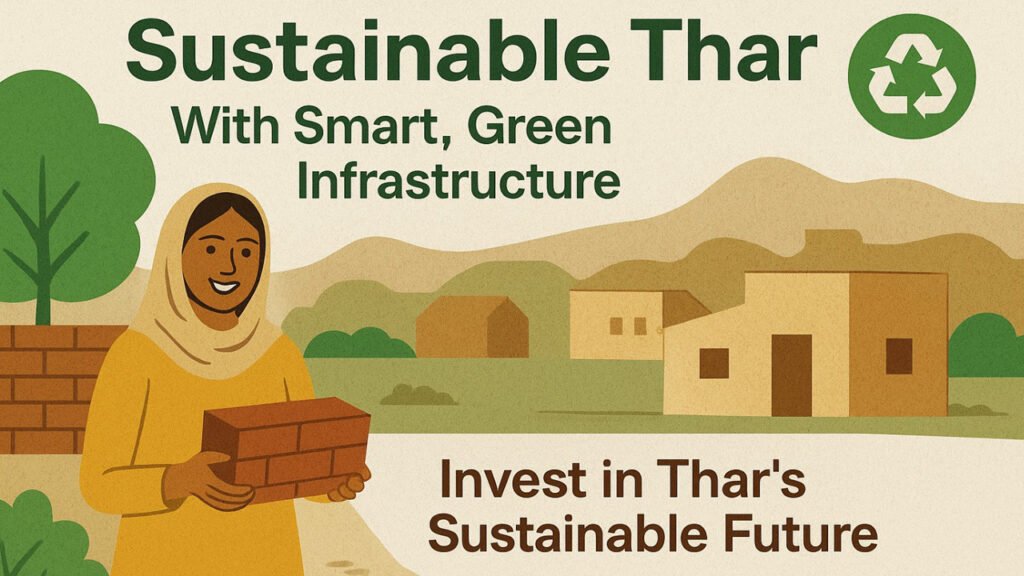By Dr. Sulman Ahmed Khoso

The Thar region, known for its vast coal reserves and hardworking communities, is now on the verge of a sustainable breakthrough.
A groundbreaking initiative in Tharparkar is turning coal power by-products into opportunity. A research team led by Dr. Sultan Ahmed Khoso from Mehran University Jamshoro, has successfully developed fly ash bricks using the by-products of Thar coal-based power plants, strengthened with locally available natural resources. These bricks are low-cost, durable, eco-friendly, and locally sourced — a true game-changer for housing and infrastructure across Thar, Mithi, Mirpurkhas, Badin, Hyderabad, and surrounding areas. This innovation is not just about bricks—it is about building a greener future for Thar and its people.
At its core, the project addresses three pressing needs of the region: affordable housing, sustainable development, and community empowerment. This project offers more than affordable construction materials. It reduces environmental waste, strengthens regional supply chains, and opens doors for community-level job creation. With high compressive strength and sustainable production, Thar fly ash bricks are perfectly suited for long-term infrastructure and housing projects in both rural and urban settings.
What makes Thar fly ash bricks different?
The bricks are designed to be:
• Low-cost: Significantly reduces construction expenses, making them affordable for both rural housing projects and urban development.
• Durable: With high compressive strength, they are suitable for homes, schools, hospitals, and long-term infrastructure needs.
• Eco-friendly: Produced from recycled fly ash, they reduce landfill waste and environmental pollution, turning an industrial by-product into a valuable resource.
• Locally sourced: Raw materials are available within Thar, ensuring a sustainable supply chain while supporting local labor and industries.
However, scaling up this innovation requires serious attention and investment. Government agencies, private investors, and development organizations must recognize the potential of fly ash bricks as a cornerstone of future housing and infrastructure projects in Sindh. Large-scale adoption could significantly cut construction costs for public sector housing schemes, disaster rehabilitation projects, and rural development programs, while simultaneously reducing environmental stress.
Imagine a Thar where every home, school, and health center is built with eco-friendly, affordable, and locally produced materials. Imagine infrastructure that is not only strong and lasting but also supports the livelihoods of local families. This is the vision of the Thar fly ash brick project.
The time to act is now. By investing in this initiative, stakeholders can help transform Thar into a model of sustainable living and smart, green infrastructure. Together, we can build a future where communities thrive on strength, affordability, and sustainability. (Published in Oct. 1-15,2025)
